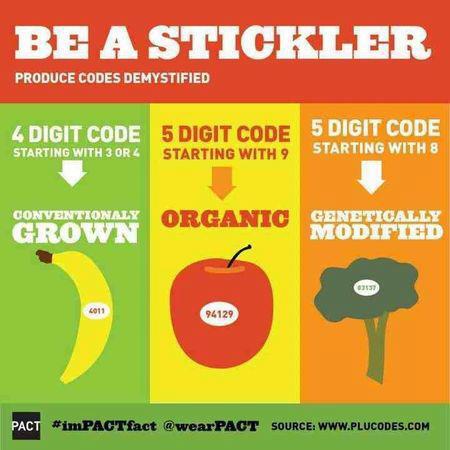Author: mixim
lentils
Custard
Ingredients:
1 cup sugar
1 tablespoon water
1 can evaporated milk 12 oz / 354 ml
1 can sweetened condensed milk 14 oz / 396 ml
1 can media crema 7.6 oz / 225 ml OR you could use sour cream mixed with a little milk to thin it just a little bit
3 eggs
3 egg yolks
1 tablespoon vanilla
1/4 teaspoon salt
NOTE** I recommend baking only 1 hour and checking it, it needs to be jiggly in center when taking out of oven
Easy instructions on how to make classic creme brulee from the Culinary Institute of America
artificial dyes can trigger hyperactivity in children
Did you know that M&M’s candies contain harmful, petroleum-based, artificial dyes that can trigger hyperactivity in sensitive children? I believe eliminating these dyes did wonders for my family’s health. M&M’s are already made without most of those dyes in Europe so I don’t understand why they are being made with cheaper, controversial ingredients in North America? Please sign my petition asking for M&M’s to be made without artificial dyes.
I’m a mom to two kids, and we like having some sweets around the house like most people do. Several years ago our little Trenton (now 9 years old) was having some behavioral problems. He was having trouble in school, at hockey practice, and at home with tasks as basic as falling asleep. He’d often have nightmares, and the slightest disappointment would set him off. As I did some research, I found out that parents all across the country have been struggling with similar hyperactivity issues. I also found out that many families were using an “elimination diet” to isolate and remove harmful ingredients — particularly artificial dyes. By removing dyes like those found in M&M’s, they were able to delay, reduce, and sometimes eliminate the need for medication.
Some of the latest info from the Centers for Disease Control and Prevention indicates that more than 1 out of every 10 school-aged child has received a medical diagnosis of attention deficit hyperactivity disorder! My understanding is that’s a 41% percent increase in the past decade, and that’s why I’m so interested in trying to find simple solutions that will help make our families healthier.
I’m not trying to keep my kids from being kids. They can have treats. But they don’t need petroleum-based dyes.
Just two days after deciding to eliminate artificial dyes from Trenton’s diet, we saw dramatic improvements! His nightmares stopped and he was able to sleep through the night. Trent changed from a child who would have a meltdown if he didn’t get his way during playtime to a calm student who could share and do his schoolwork. When Trenton returned to hockey camp, the coach couldn’t believe he was the same person, calling him “smiling, eager to participate, and a joy to have on the ice.” Trenton’s teachers and coaches all know him for his sense of humor, wit and contagious positive attitude. Trenton excels in academics and sports, and this has been possible since our family figured out the harmful effects of the dyes.
We did this without medication and by eliminating harmful dyes like the Yellow 5, Yellow 6, and Red 40 found in M&M’s. When M&M’s are sold in Europe, different dyes are used because otherwise they’d be required by law to place a label on the packaging that says “may have an adverse effect on activity and attention in children.”
With Halloween coming up, I’ve decided to work with the experts at the nonprofit Center for Science in the Public Interest (CSPI) on this campaign. Their review of scientific studies shows that artificial dyes including Yellow 5, Yellow 6, and Red 40 can stimulate hyperactivity and other behavior problems in children. CSPI has recommended that these additives be prohibited from use in foods. I was present at a 2011 hearing where even the Food and Drug Administration (FDA) acknowledged that “Exposure to food and food components, including artificial food colors and preservatives, may be associated with adverse behaviors” in children.
M&M’s used to be one of Trenton’s favorite candies, but we’ve found products in the United States like SunDrops, Yummy Gummies, and Unreal that don’t use these dyes. And they taste great! I don’t believe anyone should be eating cheap, harmful, unnecessary dyes when safer alternatives exist and already are used in M&M’s in Europe! Please join us in asking Mars Inc., manufacturer of M&M’s, to replace artificial dyes with natural coloring.
organic food
The Environmental Working Group (EWG) released its newest Shopper’s Guide to Pesticides on Monday, which is Earth Day. And apples top its annual “Dirty Dozen” list of fruits and vegetables with the highest pesticide residues for the third year in a row.
More on Shine: Another Reason to Eat Organic
Other changes from the 2012 findings: cherry tomatoes and hot peppers are newcomers this year. Blueberries and lettuce, meanwhile, dropped off the Dirty Dozen list. The environmental watchdog group uses data compiled by the USDA, based on pre-washed samples of 48 types of conventionally-grown fruits and vegetables, to produce its findings.
More on Yahoo!: Colle Farmers Market Reacts to Organic Farming Boom in Russia
“I think most Americans would be very surprised about how prevalent pesticide residue is,” EWG senior analyst Sonya Lunder told Yahoo! Shine, noting that pesticides were still seen on 67 percent of the samples, which were all either washed or peeled before being tested.
Among the top three worst offenders—apples, strawberries and grapes—nearly every sample had pesticides on it, Lunder said, with one grape alone showing traces of 15 pesticides.
The National Institute of Environmental Health Services acknowledges that scientists do not have a full understanding of the health risks associated with exposure to pesticide residues through food, soil, water, or air. Still, notes EWG, various U.S. and international government agencies have linked pesticides to a slew of health risks, including cancer, hormone disruption, brain and nervous system toxicity and irritation to the skin, eyes and lungs.
Dirty Dozen 2013:
Apples
Strawberries
Grapes
Celery
Peaches
Spinach
Sweet bell peppers
Nectarines (imported)
Cucumbers
Potatoes
Cherry tomatoes
Hot peppers
Additionally, the EWG added a “plus” category for the second year, noting two items—domestically-grown summer squash, plus kale and collards—that, though they didn’t meet Dirty Dozen standards, were commonly contaminated with exceptionally toxic pesticides. These organophosphates, dangerous to the nervous system, were phased out of agricultural use in the 1970s and ’80s, but still linger on many farm fields.
Still, there’s also good news, as the guide includes the “Clean Fifteen”—fruits and veggies with the lowest levels of pesticides, offering hopeful solutions for anyone not in the position to find or pay for more expensive organics. Many of these safest options have naturally protective coatings, such as corn, which tops that list once again this year, and papaya, which is a newcomer. Watermelon, sadly, dropped off the clean list from 2012.
“The health benefits of a diet rich in fruits and vegetables outweigh the risks of pesticide exposure,” notes the EWG report, stressing that “eating conventionally-grown produce is far better than not eating fruits and vegetables at all.”
Clean Fifteen 2013:
Corn
Onions
Pineapple
Avocados
Cabbage
Sweet peas (frozen, since they’re more readily available)
Papayas
Mangoes
Asparagus
Eggplant
Kiwi
Grapefruit
Cantaloupe
Sweet potatoes
Mushrooms
The consumer list, Lunder said, “shows the real difference you can make in your purchasing habits, even if you’re only buying conventional.”
Related:
The Bottom Line: Is Organic Food Really Any Healthier?
6 Tips for Finding Cheap Organic Food
Is Organic Food Healthier? New Study Fuels the Debate
Raw foodism (or rawism) is the practice of consuming uncooked, unprocessed, and often organic foods as a large percentage of the diet.
Depending on the type of lifestyle and results desired, raw food diets may include a selection of raw fruits, vegetables, nuts, seeds (including sprouted whole grains such as gaba rice), eggs, fish (such as sashimi), meat (such as carpaccio), and non-pasteurized/non-homogenized dairy products (such as raw milk, raw milk cheese, and raw milk yogurt).[1]
Early proponents include St. Louis Estes, Edmund Bordeaux Szekely, Johnny Lovewisdom, Ann Wigmore and Viktoras Kulvinskas (co-founders of the Hippocrates Health Institute), Arnold Ehret (author and advocate of fasting), Aris Latham (of Sunfired Foods, Inc., known as the godfather of raw food), Arshavir Ter Hovannessian[41] and Norman W. Walker (who advocated the consumption of vegetable juices).
Notable contemporary proponents include several chefs, published authors and lecturers, such as Dr. Douglas Graham, Rene Oswald, Matthew Kenney, Tonya Zavasta, Alissa Cohen, Aris Latham, Aajonus Vonderplanitz, and Elijah Joy, as well as representatives from rawfood producing companies, such as Natural Balance Food‘s founder, Jamie Combs.
Celebrity proponents include Demi Moore, Woody Harrelson, Jason Mraz, Ben Vereen and Carol Alt. Woody Harrelson has published books on raw food, starred in a raw food film, created a raw food website[42] and also opened O2, a raw food restaurant and bar. Model and actress Carol Alt includes raw animal products in her diet; she has written several books on her version of the raw diet and lifestyle.
Interest in the “Raw Foods Movement” continues to grow today[43] and is especially prevalent in Australia and the western United States,[44] like California.[45] In Europe, it has remained a novelty, although a few restaurants have opened in the UK,[10] Germany,[46] and other large cities.[47] Numerous all-raw cookbooks have been published.[48]
Supercharge Me! 30 Days Raw is a feature-length documentary film about the raw foods diet, made by Jenna Norwood, a former public relations consultant turned independent filmmaker, health educator and raw food chef.[49] In the film, inspired by Morgan Spurlock‘s Super Size Me, Jenna ate only raw foods for thirty days, to document the effect it would have on her health.
Richard Wrangham, a primate researcher and professor of anthropology, has suggested that eating cooked food is more “natural” for the human digestive system, because he thinks that the human digestive system may have evolved to deal with cooked foods.[130][131] Wrangham thinks that cooking explains the increase in hominid brain sizes, smaller digestive tract, smaller teeth and jaws and decrease in sexual dimorphism that occurred roughly 1.8 million years ago.[130][131] Most other anthropologists oppose Wrangham,[132] stating that archeological evidence suggests that cooking fires began in earnest only c.250,000 years ago, when ancient hearths, earth ovens, burnt animal bones, and flint appear across Europe and the Middle East. Two million years ago, the only sign of fire is burnt earth with human remains, which most other anthropologists consider to be mere coincidence rather than evidence of intentional fire.[133] The mainstream view among anthropologists is that the increases in human brain-size occurred well before the advent of cooking, due to a shift away from the consumption of nuts and berries to the consumption of meat.[134][135]
Onion-Rye dinner rolls
- 1 cup milk
- 2 tablespoons honey
- 1 teaspoon salt
- 3 tablespoons butter
- 5/16 oz active dry yeast
- 1/2 lukewarm water (1100F)
- 3 cups white flour
- 2 tablespoons caraway seeds
- 6 tablespoons minced onion
- 1/2 wheat germ
- 1-1 1/4 cups rye flour
- 1 egg
- 2 teaspoons water
- Scald milk; combine it in mixing bowl with honey, salt, and butter.
- Stir well; cool to lukewarm.
- Dissolve yeast in the lukewarm water; combine with milk mixture.
- Add white flour and beat vigorously 1 minute or until batter is very smooth.
- Add caraway seeds, onion, wheat germ, and enough rye flour so dough is firm enough to knead.
- Turn dough onto floured surface; knead 8 minutes.
- Place in greased bowl, turning once to coat evenly.
- Cover and let rise in warm place until dough is doubled (one hour).
- Punch down dough and roll by hand into a long rope about 1 1/2 inches thick.
- Cut into 1 1/2 inch pieces and shape into buns.
- Place 2 inches apart on an oiled baking sheet.
- Cover with towel and let rise until doubled.
- Preheat oven to 4000F.
- Beat the egg with warm water and brush the top of the buns.
- Bake 12-15minutes or until nicely browned
Yield 18-24 dinner rolls.
麻婆豆腐 作り方レ
Uploaded on Aug 6, 2010
Ingredients for Mapo Tofu (serves 2) 麻婆豆腐の作り方 字幕表示可
1 tbsp Sesame Oil
100g Ground Pork (3.53 oz)
1 tbsp Chopped Garlic
1 tbsp Chopped Ginger
1/2 tbsp Doubanjiang – Chili Bean Paste
1 tbsp Tian Mian Jiang – Sweet Bean Sauce
1 tbsp Sake
– Chicken Stock –
1/2 tsp Granulated Chicken Stock (Chinese-style)
150 ml Hot Water (5.07 fl oz)
1 tbsp Soy Sauce
1 tbsp Sake
1 block of Firm Tofu (350g/12.3 oz)
30g Garlic Chives (1.06 oz)
2 tsp Potato Starch
1⅓ tbsp Water
Sichuan Pepper
Steamed Rice with Millet
** Doubanjiang, Tian Mian Jiang and Sichuan Pepper are found in the Chinese food section of most major grocery stores.
材料 2人分
・ごま油大1
・豚ひき肉100g
・にんにく(みじん切り)大1
・しょうが(みじん切り)大1
・豆板醤 (トウバンジャン)大1/2
・甜麺醤(テンメンジャン) 大1
・酒 大1
・鶏がらスープ150ml 顆粒チキンスープの素(中国風)小1/2 湯150ml
・醤油大1
・酒大1
・木綿豆腐1丁(350g)
・ニラ5本 (30g)
・水溶き片栗粉 片栗粉:小2 水:大1⅓ (片栗粉の倍量の水)
・花椒粉(ホワジャオフェン)適量
・雑穀入りご飯(もちろん普通のご飯でもOK)
※ 豆板醤、甜麺醤、花椒粉 は中華食材コーナーで購入して下さい。
http://youtube.com/cookingwithdog
http://facebook.com/cookingwithdog
http://google.com/+cookingwithdog
http://twitter.com/cookingwithdog
GOI CUON
Uploaded on Jun 23, 2011
While at Red Bridge Cooking School in Hoi An, Vietnam
Vietnamese prawn rice paper rolls are so delicious that it’s hard to believe that they’re also really healthy.
These rolls have been popular in Australia for some time – appearing in restaurants and cafes around the country.
Rice paper sheets are softened in hot water and then filled with lettuce, cucumber and cooked prawns (shrimp). Cilantro, mint and Thai basil add freshness and the sweet-salty-spicy-sour dipping sauce adds that unmistakable south-east Asian flavor.
Ingredients:
20 medium shrimp, peeled & deveined
2 cups of cooked rice vermicelli noodles
10-12 round rice paper sheets (16cm or 6″ diameter)
1 cup fresh mint leaves
1 cup fresh Thai basil leaves
1 cup of fresh cilantro (coriander)
1 medium cucumber, peeled, deseeded and cut into matchsticks
1 small head of iceberg lettuce, washed and torn into strips
Nuoc Cham Dipping Sauce
2 small, red Bird chillies
2 large garlic cloves
1 Tbsp palm sugar
Juice from 2 fresh limes
1/4 cup fish sauce
1 Tbsp of rice wine vinegar
2 Tbsp of cold water
Preparation:
Boil some water in a medium saucepan. Add shrimp to boiling water and simmer for about 1 minute or until the shrimp turn white and orange. Remove shrimp from water with a slotted spoon. Set aside to cool. Once cooled, cut shrimp lengthwise in half.
Cook rice vermicelli according to packet instructions. Drain and set aside to cool.
Soak one rice paper sheet in a large bowl of warm water for about 20 to 30 seconds or until soft. The sheet may curl at the edges so try to flip it with your fingers when it does this. Gently remove sheet from water and drain on paper towel. Place sheet on a clean work surface.
Place some lettuce strips, mint, basil, cilantro and cucumber along the middle of sheet. Shape the filling into a compact log and ensure that you leave about 1″ of space at the top and bottom. Top with 3 shrimp halves.
Fold in ends and top with 1 garlic chive. Roll up firmly to enclose filling. Repeat to make remaining rice paper rolls.
Make the nuoc cham dipping sauce. Pound the chillies and garlic in a mortar and pestle to form a paste. Add palm sugar and pound until combined. Transfer paste to a small mixing bowl.
Add lime juice, fish sauce, vinegar and 2 tablespoons cold water. Whisk together until combined well. Serve with Vietnamese rice paper rolls.
Ingredients:
Cold Water
Rice Paper,
Finely slice Carrot and Broccoli (steamed until tender),
1 cup of Vermicelli,
Diced Chicken Breast (or left over BBQ Chicken)
Ingredients:
3 Cloves of Garlic (or 1 if you’re not a garlic fan),
1 red chilli,
3 tablespoons of castor sugar,
1/2 fresh lemon,
5 tablespoons of fish sauce,
5 tablespoons of water
Click here for full recipe in English and Vietnamese (Bam vao day xem cong thuc) http://danangcuisine.blogspot.com/201…
How to make Vietnamese fresh spring rolls 😉
Wie man Sommerrollen (frische vietnamesische Frühlingsrollen) macht.
Ingredients:
For the rolls
300g (0.66 lb) pork belly
1 tsp salt
15 small shrimps, about 200g (0.44 lb)
200g (0.44 lb) rice vermicelli “bún”
15 pieces rice paper round
Fresh greens: Lettuce, mint, cilantro, garlic chives, cucumber
For the dipping sauce:
1tbsp oil
1tbsp minced garlic
5tbsp hoisin sauce (http://amzn.to/18JgeDX)
5tbsp pork broth
1tbsp peanut butter (http://amzn.to/13GOQUX)
1tbsp sugar
ラーメン
Uploaded on Feb 7, 2010
Recently, GaijinPot sat in on a ramen shop for an afternoon with the very gracious Fumio Tamiwaki. It was an amazing experience from something that usually appears completely normal to those who have been in Japan for a long time: interesting to hear about his experiences and to pick out some nuggets of noodly information.
Basa/Pangas
El panga (Basa), es un nuevo pescado asiático que encontramos en las cadenas de supermercados, sobre todo en forma de filetes, a precio muy barato. El panga es un pescado de piscicultura intensiva / industrial en Vietnam , más exactamente en el delta del río Mekong y está invadiendo el mercado debido a su precio.
PARECE UN FILETE HERMOSO, GORDITO Y MUY ECONOMICO.
Esto es lo que hay que saber sobre el panga:
El río Mekong es uno de los ríos con mayor contaminación del planeta. Los pangas están infectados con elevados niveles de venenos y bacterias (arsénico de los residuos industriales, tóxicos y peligrosos subproductos, del creciente sector industrial), metales contaminantes, fenoles policlorados (PCB) o DDT y sus (DDTs), clorato, compuestos relacionados (CHLs), hexaclorociloxano, isómeros (HCHs) y hexaclorobenceno (HCB). No hay nada natural en los pangas.
Son alimentados con peces muertos, restos de huesos y con una harina de América del sur, la mandioca y residuos de soya y grano.
Obviamente, este tipo de alimentación no saludable no tiene nada que ver con la alimentación en un ambiente natural.
Es lo más parecido a la alimentación de las vacas locas (vacas, que fueron alimentadas con residuos de vacas, ¿se acuerdan?).
La alimentación de los pangas está completamente fuera de toda reglamentación Sanitaria. El panga crece 4 veces más rápido que en la naturaleza en su estado natural. Además los pangas son inyectados con (PEE), algunos científicos descubrieron que si se inyectase a las hembras panga con las hormonas femeninas derivados del deshidratado de orina de mujeres embarazadas, la hembra panga produciría sus huevas muy rápidamente y en gran cantidad, lo que no ocurriría en ambiente natural (una panga pasa así a producir 500.000 huevas de una vez). Básicamente son peces con hormonas inyectables, (producidas por una empresa farmacéutica china) para acelerar el proceso de crecimiento y reproducción. Al comprar pangas, estamos colaborando con empresas gigantes sin escrúpulos y especuladoras, que no se preocupan de la salud y el bienestar de los seres humanos. Este comercio está siendo aceptado por grandes cadenas comerciales que venden al público en general, sabiendo que están vendiendo productos contaminados. Nota: Debido a la prodigiosa cantidad de pangas disponibles, éstos acabarán en otros alimentos: surimi(aquellas barritas con pasta de pescado), pescado en lata y probablemente en algunos alimentos para animales (perros y gatos).
Panga is the common South African name for Pterogymnus laniarius, a small, ocean-dwelling fish, native to the southeast Atlantic Ocean and southwest Indian Ocean. Alternatively called “torpedo scads“, they are cold-blooded with white flesh. Their scales are generally pink in color with whitish underbelly and blue-green stripes running laterally along their sides.
Over the course of its life, a panga will undergo periodic sex-changes with as much as 30% of the population being hermaphroditic at a time. Despite the presence of both sex organs, it is thought unlikely that both are simultaneously active. Panga are slow to reach sexual maturity, with a minimum population doubling time of 4.5–14 years.
In other countries, the name panga may refer to a different species. In Indonesia, it refers to Megalaspis cordyla, in Spain, the Netherlands and Poland it refers to Pangasius hypophthalmus, and in Kenya it refers to Trichiurus lepturus.
Many are snatching up the fish at supermarkets as they are very cheap. The
fish looks good but read the article and you will be shocked. This product is
from Vietnam.
Do you eat this frozen fish called BASA? ( Pangasius, Vietnamese River Cobbler,
White Catfish, Gray Sole )
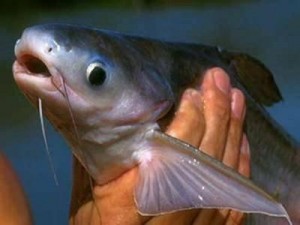
Industrially farmed in Vietnam along the Mekong River, BASA or Pangas or
whatever they’re calling it, has only been recently introduced to the French
market. However, in a very short amount of time, it has grown in popularity
in France. They are very, very affordable (cheap), are sold in filets with no
bones and they have a neutral flavor and texture; many would compare it to
cod and sole, only much cheaper. But as tasty as some people may find it,
there’s, in fact, something hugely unsavory about it. I hope the information
provided here will serve as very important information for you and your future
choices. Here’s why it is better left in the shops and not on your dinner
plates:
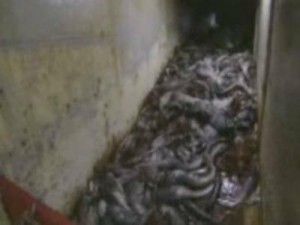
1. BASAS or Pangas are teeming with high levels of poisons and bacteria.
(industrial effluents, arsenic, and toxic and hazardous by-products of the
growing industrial sector, polychlorinated biphenyls (PCBs), DDT and its
metabolites (DDTs), metal contaminants, chlordane-related compounds
(CHLs), hexachlorocyclohexane isomers (HCHs), and hexachlorobenzene
(HCB) ).
The reason is that the Mekong River is one of the most polluted rivers on the
planet and this is where basa/pangas are farmed and industries along the
river dump chemicals and industrial waste directly into it. Avoid eating them
because they contain high amounts of contamination. Regardless of Reports
and recommendations against selling them, supermarkets still sell them,
knowing full well that they are contaminated.
2. They freeze Basa/Pangas in contaminated river water.
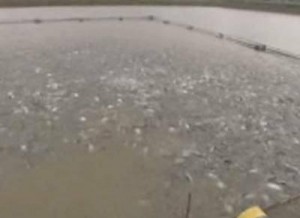
3. BASA/Pangas are raised in Vietnam .. Pangas are fed food that comes
from Peru ( more on that below ), their hormones ( which are injected into
the female Pangas ) come from China . ( More about that below ) and finally,
they are transported from Vietnam to other countries
4. There’s nothing natural about Basa/Pangas – They’re fed dead fish
remnants and bones, dried and ground into a flour (from South America),
manioc ( cassava ) and residue from soy and grains. This kind of nourishment
doesn’t even remotely resemble what they eat in nature. But what it does
resemble is the method of feeding mad cows ( cows were fed cows,
remember? ). What they feed basa/pangas is completely unregulated so
there are most likely other dangerous substances and hormones thrown into
the mix. The basa/pangas grow 4 times faster than in nature, so it makes
you wonder what exactly is in their food? Your guess is as good as mine.
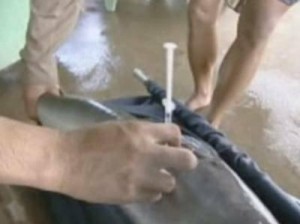
5. Basa/Pangas are injected with Hormones Derived from Urine. They inject
female Basa/Pangas with hormones made from the dehydrated urine of
pregnant women, the female Pangas grow much quicker and produce eggs
faster ( one Basa/Panga can lay approximately 500,000 eggs at one time ).
Essentially, they’re injecting fish with hormones ( they come all of the way
from a pharmaceutical company in China ) to speed up the process of growth
and reproduction. That isn’t good. And also consider the rest of the reasons
to NOT eat BASA.
6. You get what you pay for – and then some. Don’t be lured in by insanely
cheap price of Basa/Pangas. Is it worth risking your health and the health of
your family?
7. Buying Basa/Pangas supports unscrupulous, greedy corporations and food
conglomerates that don’t care about the health and well-being of human
beings. They are only concerned about selling as many basa/pangas as
possible to unsuspecting consumers. These corporations only care about
making more money at whatever cost to the public..
8. Basa/Pangas WILL make you sick – If you don’t get ill with vomiting,
diarrhea and effects from severe food poisoning, congratulations, you have
an iron stomach! But you’re still ingesting POISON not “Poisson”.
Final important note: Because of the prodigious amount of availability of
Basa/Pangas, be warned that they will certainly find their way into other
foods like imitation crab sticks, fish sticks, fish terrines, and probably in some
pet food too. Just check the Ingredient List to see if Basa is one of the
ingredients. Good Luck.
You have been warned !!!
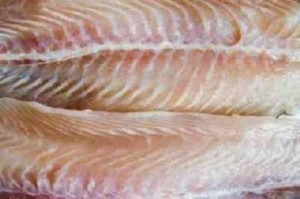
Why are we allowing this product to be imported?

